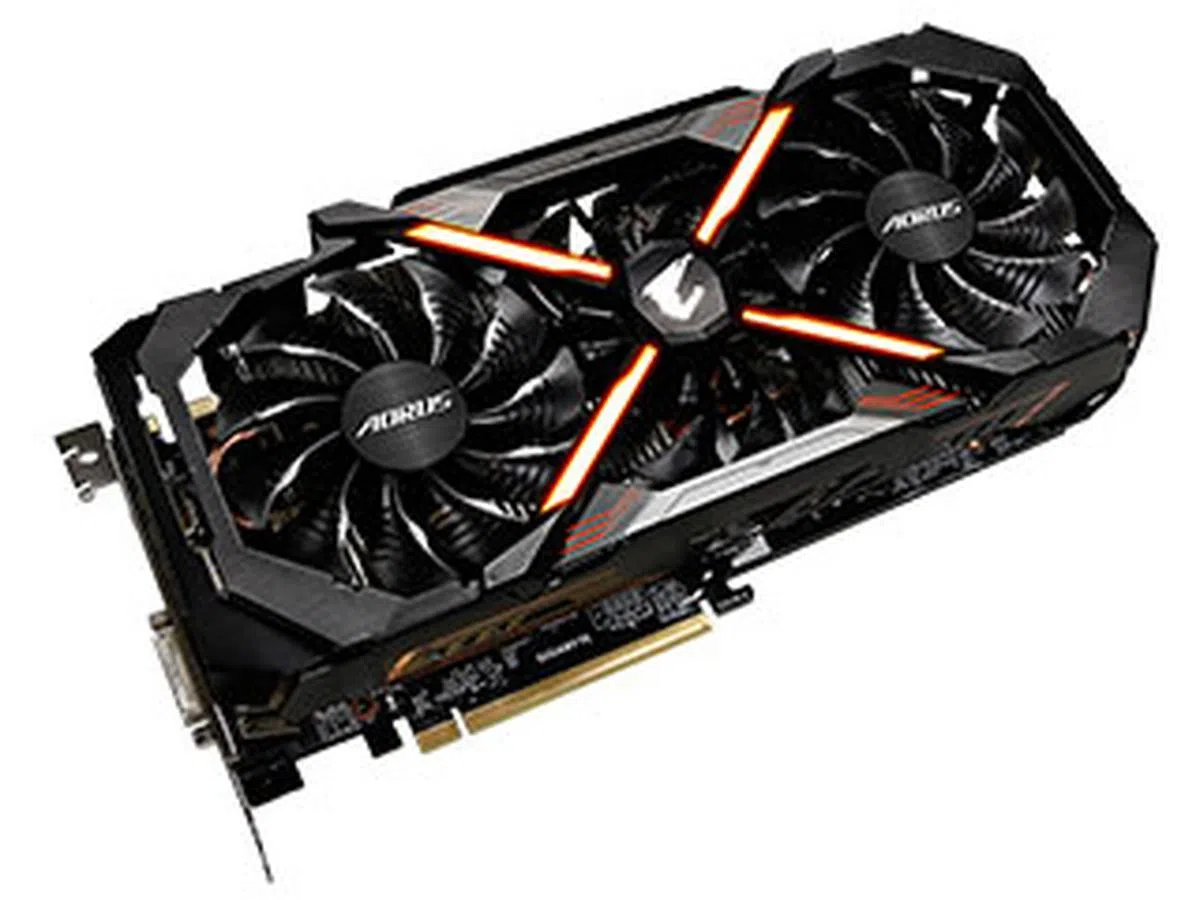NVIDIA GeForce GTX 1080 Ti shootout: The fastest cards money can buy
The NVIDIA GeForce GTX 1080 Ti is the fastest consumer graphics card right now. And after custom card vendors add in their own bells and whistles, you get a spread of seriously monstrous GPUs. Here's a look at which one you should get.

GALAX GeForce GTX 1080 Ti HOF.
If you’re looking to game at 4K, the NVIDIA GeForce GTX 1080 Ti is the card to get. The Founders Edition card is an actual beast, and its die-cast aluminum body and faceted design is to die for. However, if you're looking for extra performance or want to put together a color-coordinated build, you've probably set your sights on a custom card.
These cards take things up another notch with aggressive factory overclocks, hulking coolers, and dazzling LEDs. There are a ton of them, with multiple brands and a sprawling selection of different models from each vendor. So even if you decided to go all out and get NVIDIA's flagship card, you'll then have to face down a multitude of options that are all vying for your money with attractive designs and some unique selling point such as extra fan headers or display connectors.
They're all based on the same GP102 GPU, so you're already assured of stellar performance. Instead, it comes down to your individual requirements and preferences, and of course, how well the different vendors implement their custom designs.
Details matter, and you'll want to have done your research before settling on a decision.
To help you along, we've rounded up flagship cards from ASUS, GALAX, Gigabyte, MSI, Palit, and Zotac and pit them against one another to see who does it best. GALAX is actually a new entrant to the local market, so you have even more choices this time around.
[hwzcompare]
[products=621909,621913,621916,621920,621923,621929]
[width=200]
[caption=Test cards compared]
[showprices=1]
[/hwzcompare]
ASUS ROG Strix GeForce GTX 1080 Ti OC

This is the most expensive card in the shootout.
The OC variant of ASUS' ROG Strix cards have generally been more expensive than the competition, and this card doesn’t disappoint. At an eye-watering $1,539, it is significantly more expensive than most of its other competitors. (Update 30/11/2017: ASUS has just dropped the price on the card to a more palatable $1,349)
In fact, Gigabyte has cheaper cards that feature closed-loop cooling or even a built-in water block, such as the Aorus GeForce GTX 1080 Ti Waterforce Xtreme Edition that costs S$1,499.
But price aside, the ROG Strix GeForce GTX 1080 Ti OC is quite an impressive specimen. There are several usability improvements over the Founders Edition model – for instance, you get your DVI-D port back, even though NVIDIA removed it on its reference design. There are also two HDMI ports available, which makes it easier to use with a VR headset and monitor.

The DVI-D port is back.
One interesting feature is something called FanConnect II. This takes the form of two 4-pin headers at the front of the card, which you can connect to your case fans to allow them to adjust their speeds according to the GPU temperature instead of the CPU. The former is often a better indication of system load while gaming, so it's arguably more useful to have fan speeds pegged to that instead.
Another nice touch is the inclusion of a third 4-pin header for Aura Sync-compatible RGB LED strips, so you can get a real light show going, especially if you've got a compatible ASUS motherboard as well. This makes ASUS' choice of an all-black shroud pretty smart, as it's a fairly inoffensive color that should go well with whatever color scheme you end up going with.

The two 4-pin fan headers (black) sit beside a separate 4-pin RGB LED header (red).
More importantly however, the cooling solution has been beefed up significantly, the better to accommodate the relatively high factory overclocked speeds in OC Mode. The cooler has been completely redesigned here, and we’re happy to see ASUS finally ditch the inefficient DirectCU design that put the heat pipes in direct contact with the GPU. In the previous design, the heat pipes were not being utilized fully as the ones on the peripheries were barely touching the GPU.
This time, the six heat pipes draw heat away from the GPU via a nickel-plated copper plate, and ASUS claims this design effectively doubles the contact area with the GPU for better heat transfer. ASUS calls this MaxContact Technology, so while the copper plate isn’t visibly larger, the company says the surface is much flatter, which is how it maximizes the contact area.
The large heatsink also increases the surface area available for heat dissipation, but its sheer thickness means that you’ll need a 2.5-slot allowance for it. Still, the same goes for most of its other competitors, so this is pretty much par for the course on GTX 1080 Ti custom cards.
All three fans are also IP5X-certified for dust resistance, so you shouldn't have to worry too much about pesky dust particles killing the fan.
A die-cast plate sits on top of the rear memory chips and MOSFETs, complete with thermal pads to provide some passive cooling capacity. This plate also serves up additional structural reinforcement, which is important for such a large and heavy card. The brushed metal backplate works mainly to shore up the integrity of the card as well, and the ROG logo on it pulses to life when you power it up.

The brushed metal finish makes for a more elegant look.
The card is powered by two 8-pin power connectors, much like everyone else. In the picture below, you can also see a second smaller fin stack sticking up from the main heatsink. This protrusion looks like it makes contact with the aforementioned die-cast plate in order to provided an added degree of cooling, even though the narrow points of contact with the vertical fins don't seem like much.

You'll need two 8-pin connectors for the card.
Finally, ASUS would like you to know that the card is manufactured using its Auto-Extreme automated manufacturing technology, which is supposedly more reliable and consistent. This means flux-free production and a smoother PCB, in theory at least.
GALAX GeForce GTX 1080 Ti HOF

Make sure to pair this with other white components.
GALAX’s Hall of Fame (HOF) GeForce GTX 1080 Ti card stands out as one of the more extravagant offerings reviewed here. Everything from the box packaging to the card screams for attention, and GALAX even opted to include a pair of presumably anti-static gloves with the card.
This is a really chunky and long card, measuring in at 57mm tall, 313mm long, and featuring three 90mm semi-passive fans. You’ll need no less than three PCIe slots to install this card, and sufficient clearance lengthwise. For most cases with modular drive bays, this means having to forego some storage space.
The mostly white plastic shroud also makes for quite a striking look, and this is one GPU that should definitely be paired with a matching board or other components. Even the PCB is white, or "choco-white" according to GALAX, and this is really a pretty stunning card to look at, even if it may not necessarily be to everyone's taste.

There's a matching PCB to go with the white cooling shroud.
Other notable features include a backlit LCD display on the card’s top side, where you can display things like the HOF logo or clock speeds and voltages. In addition, you can make it display custom text, although it can look fairly boring given the low resolution monochrome panel.

The LCD display can be customized with your own text.
When it comes to cooling, there’s unfortunately no dedicated VRM heatsink despite the card coming with three 8-pin power connectors. Instead, GALAX has gone with a mounting frame that sits between the heatsink and the PCB, and this helps to provide structural reinforcement and a degree of passive cooling. You can also see part of the silver mounting frame in the picture below.

Not one, not two, but three 8-pin connectors.
A copper plate connects with the GPU and channels heat away to the five heat pipes, while an additional circumference of copper around the main base plate helps cool the GDDR5X memory chips. The aluminum backplate also provides further passive cooling, and there are thermal pads that make contact with some of the PCB components.

The metal backplate is certainly fancy.
GALAX also lists the card as having an impressive 16+3-phase power design, but it really consists of just eight true phases which are doubled to give rise to 16.
And unlike most of the other cards, the GALAX model comes with just a single set of base and boost clocks, and there’s no OC Mode that you can switch to for a quick performance boost. That said, the Xtreme Tuner Plus utility does come with a 1-click OC function should you really want those extra frames right away.
Alternatively, if you want a boost in cooling instead, there's a nifty HyperBoostX button at the back that will speed up the fans. This naturally means more noise, but it can come in useful in maintaining high overclocks.
You'll also notice that GALAX has brought back the DVI-D port as well, a common feature among the cards here.

The silver HyperBoostX button will let you quickly give fan speeds a boost.
When it comes to price, the GALAX card costs S$1,349, which is quite a palatable price for all the extras it offers.
Gigabyte Aorus GeForce GTX 1080 Ti Xtreme Edition 11G

The Aorus card manages to pack three fans into a slightly shorter body than would otherwise be required because of the recessed middle fan.
Aorus’ take on the GeForce GTX 1080 Ti stands out for its particularly thoughtful cooling system. The card is outfitted with three 100mm fans, but unlike the GALAX card, it manages to make the length more manageable by employing a stacked design. This is Gigabyte's premium gaming brand, much like ROG is to ASUS, so we'd expect nothing but top-notch performance and design here.
The middle fan is slightly recessed, and the other two fans overlap it, so they overall require less space. While this is still a fairly large card at 293mm long, any effort to make it less unwieldy is definitely welcome.
The WindForce fan in the center also spins in the opposite direction from the other two, supposedly to better optimize airflow.
We should also point out that this is one of the highest clocked cards of the lot, second only to the Zotac, with a 1,607MHz base clock and 1,721MHz boost clock.
The metal backplate confers quite a lot of heft to the card, and it helps shore up the structural integrity of the PCB. The Aorus logo lights up when the card is powered on, and you'll be able to customize the effects using the Aorus Graphics Engine utility.
In addition, there’s a large cutout on the backplate that exposes a distinctive copper plate. This copper plate sandwiches the GPU between it and a separate copper base plate that is in direct contact with the chip and VRAM. This two work in tandem to cool the GPU, so while the heatsink draws heat away from the GPU and VRAM, the copper plate helps dissipate heat from the back of the chip’s package.
Many base plates only make direct contact with the GPU and neglect the VRAM, so it's nice to see Gigabyte go with an extra-large one that extends to VRAM components as well. And because the base plate interfaces directly with the six heat pipes, the memory chips are able to benefit from active cooling. We really like this, and it's an improvement from half-hearted designs that force the VRAM chips to rely on thermal pads interfacing with the narrow heatsink fins for some measure of cooling.

There is also further thermal padding on the metal backplate itself, which makes contact with select components on the PCB itself. As a result, it functions as more than just a structural support and actually helps with passive cooling by providing additional surface area for heat dissipation.
The voltage regulation components, chokes, and capacitors are cooled by the large heat sink fin array, and more thermal pads help interface between the latter parts and these crucial components. That's quite a large heat sink to tap on, and is definitely a plus for the Aorus card. One nice design decision is the inclusion of flattened areas to help increase the total contact area, which should make heat transfer more efficient in theory.
This may also be the card to get if you have a VR headset, and it comes with a total of three HDMI ports, one of which sits at the front of the card. If you also run your monitor off HDMI and want to do VR, this could turn out quite useful.

Here's a look at the HDMI port at the front of the card.

You'll only be able to use either the DVI-D or HDMI2 port at any one time.
However, while Aorus is claiming a total of 12 phases for the GPU, there are just six real phases, and we once again see the use of phase doublers to create 12 control circuits. Two 8-pin connectors power the card, the same as almost everyone else.

The Fan Stop indicator on the side lights up when the fans stop spinning during less demanding tasks.
At S$1,290, the Aorus sits right in the middle of the pack in terms of pricing, and it manages to not ask for too much while still offering a compelling blend of valuable features.
MSI GeForce GTX 1080 Ti Gaming X 11G

The Twin Frozr VI cooler on the MSI card runs quite cool and quiet.
MSI’s GeForce GTX 1080 Ti Gaming X 11G is a familiar sight. Its Twin Frozr VI cooler shares the same aesthetic as its predecessors, and there are few surprises here.
Still, there’s a lot to like about the card. For one, at 290mm long and 51mm thick, it’s the slimmest and one of the shortest cards we’re reviewing here, so it’s considerably easier to handle. That said, you’ll still need a 2.5-slot allowance to install this, so be sure to make sure you’ve space for it.
The card owes its more manageable dimensions to MSI’s dual fan design. The cooler features two large 100mm Torx 2.0 fans, which use a mix of steep and more gently curving blades to find a balance between high airflow and static pressure.
But what’s really great about the card is how silent it is. Even at maximum speeds, the fans were still far quieter than the competition, while only posting slightly higher temperatures in the range of a few degrees, so you’re not sacrificing much cooling performance for a quieter experience.
The display outputs have been tweaked here as well, and you get two HDMI ports to accommodate a VR headset and HDMI monitor at the same time.

Compared to the reference design, one of the DisplayPort connectors has been replaced with an HDMI port on the MSI model.
When it comes to cooling, you’ll find a dedicated VRM heatsink that sits directly on top of the PCB to provide cooling for the memory modules. A nickel-plated copper base plate is in direct contact with the GPU, and it wicks heat away to the main heatsink.
In addition, a secondary metal plate can be found to one side of the main heatsink (which is actually comprised of two separate fin stacks) and these make contact with the chokes and other circuitry to further assist with cooling. In the picture below, you can see part of this metal plate and how it extends around to the display bracket.

The MSI logo can be customized with various lighting effects.
When it comes to the VRM circuitry, MSI hasn’t bothered with phase doublers, opting instead for eight real phases for the GPU and two for the memory system. That said, we should stress that the number of phases doesn’t mean much, and it’s the quality of the implementation that matters more when it comes to overclocking. The card also comes with two 8-pin connectors for power, which is pretty par for the course at this point.

The card also comes with a metal backplate for added structural support, but unlike what we saw on the Aorus card, the backplate hasn't been co-opted into the card's cooling solution at all.

However, this is also one of the lower clocked cards, even in OC Mode. Its 1,569MHz base clock puts it in the same company as the GALAX card, but you’ll need to download the MSI Gaming App to get the extra boost as the card runs in the lower clocked Gaming Mode by default.
This is one of the more affordable cards in this shootout at S$1,279, and while it doesn't come with fancy features such as extra display connectors, fan headers, or even an LCD panel, it's still a very well-rounded offering for those of you who don't need the additional features.
Palit GeForce GTX 1080 Ti GameRock Premium Edition

Palit has employed a stacked fan design here so there are actually four fans.
Palit’s GeForce GTX 1080 Ti GameRock Premium Edition is the flagship model in the company’s stable of custom cards. It also comes decked out in a striking blue color just like the other GameRock cards, but how you feel about it may depend on whether or not you’re going for a color-coordinated build. This is also the most affordable custom GeForce GTX 1080 Ti card here at S$1,258. In other words, it's still expensive, but it doesn't quite reach the stratospheric pricing of some of the other cards.
Overall, the card’s design is quite conservative, and there are no fancy custom LCD panels or anything like that. However, one interesting thing to note is that while this looks like a fairly standard dual-fan cooler, it actually has no less than four fans.
It’s a little difficult to tell from the pictures, but the fans are actually stacked on top of each other. Palit calls this TurboJET4, and because the top and bottom fans spin in opposite directions, this supposedly helps reduce the formation of vortexes that could interfere with air flow.
In theory, this then helps funnel air more effectively through the heatsink and speeds up heat dissipation.
The cooler is paired with a brushed metal backplate, and you can also see an additional supporting bracket for the GPU die through the backplate.

The backplate would probably look better without the GameRock name splashed all over it.
No card aspiring to the premium segment of the market would be complete without RGB LEDs, and the GameRock Premium doesn’t disappoint. The cooling shroud and edge of the PCB boast the aforementioned LEDs, but it ultimately feels like Palit’s implementation isn’t as refined as some of its other competitors. For instance, there's an LED strip at the edge, but there aren't enough of these to create a seamless light bar. Instead, you can clearly make out each individual LED, which makes for a less than desirable look.
Nevertheless, you can customize the lighting using Palit’s ThunderMaster utility, or set the lights to change according to the GPU temperature. However, the lighting effects still feel rather rudimentary compared to the competition, and they lack some of the subtlety evinced in the other cards, such as small LED cutouts built into the shroud itself.
The build quality of the card also feels somewhat lacking (still, it’s nothing you should worry too much about), which isn’t helped by the fact that this is possibly the thickest card in this shootout at 58mm thick. You’ll require the better part of three slots to install it, although the same goes for most of the competition.

But even if the GameRock Premium Edition is not the most stunning card to look at, there’s a nice focus on performance here. For instance, the card comes with pretty aggressive factory overclocks, to the tune of a 1,594MHz base clock and 1,708MHz boost clock in OC mode. In comparison, the regular GameRock ships with a 1,518MHz base clock.
You also get dual onboard BIOS, which can be useful in recovering from failed overclocks. Both of these are also programmed with different clock speeds – BIOS 1 for OC mode and BIOS 2 for the standard speeds – so it can double up as a way to switch modes without having to download the ThunderMaster utility.

You'll need a pen or something similar to flick the BIOS switch.
The GameRock Premium Edition card is equipped with a 12+2-phase power design, and is powered by two 8-pin power connectors. It’s cooled by four heat pipes, which whisk heat away from the GPU via a copper baseplate that is in direct contact with it. In addition, thermal pads help interface between the memory chips, VRM circuitry, and the heat sink.

The card is powered by two 8-pin power connectors.
Finally, the honeycomb bracket at the rear supposedly helps improve airflow out the back of the card. This is an open-air cooler that still dumps heat predominantly in the case, but the extra perforations may help with heat dissipation.

The rear bracket has far more perforations than on other cards.
Zotac GeForce GTX 1080 Ti AMP Extreme

This is one of the highest clocked GeForce GTX 1080 Ti cards you can get.
Zotac is going after those who are looking for raw out-of-the-box performance with its AMP Extreme card. A look at the specifications shows that this is actually the highest clocked card of the lot, and it runs at around 100MHz higher than the MSI card at default settings, with a 1,645MHz base clock and 1,759MHz boost clock.
Unlike with some of the other cards, you also won't need to install any utilities to activate those speeds, and it'll run at the highest rated clocks right out of the box.
However, while that’s nice to look at in theory, the 100MHz boost doesn’t quite translate into a large gain in practice, so clock speeds really shouldn’t be all you look at when choosing a card. Still, this is Zotac’s flagship, and it is every inch a hulking, imposing beast.
At 325mm long and with three 90mm fans, this card requires a ton of space. You'll definitely want to check if you have enough clearance in your case, and some chassis may even require you to remove the front HDD cage to make room. The card is also rather thick at 56.6mm tall, so you’ll need three PCIe slots to have room for it. Furthermore, this is quite a loud card, so be prepared to put up with some noise.

The translucent bits light up when the card is powered on.
A copper base plate is in direct contact with the GPU, and there’s a larger aluminum plate around it to help with cooling for the memory. Four 6mm and two 8mm composite heatpipes then channel heat away to the large heatsink array. The aluminum plate around the copper base plate is sort of similar to what Gigabyte did, but the main difference is that Gigabyte's design features a single, large copper plate for both the GPU and VRAM.
Nevertheless, this aluminum plate is also attached to the heatsink, so the memory chips can benefit from the greater surface area for heat dissipation.

Here's a look at the card from the side and its thick fin stack.
The VRM components get their share of attention too, but it’s less comprehensive of a solution than on the Aorus or MSI cards. A black, finned heatsink sits above the VRM, but this appears to have been placed in isolation, and Zotac unfortunately hasn’t done anything to facilitate contact with the main heatsink.
That’s a good opportunity wasted, and some of the airflow from the fans that might serve to cool the VRM heatsink is even blocked by a rubber dampener on the main fin stack, as it’s located close to where the VRM heatsink is.
The 16+2-phase power design is also achieved using phase doublers, the same as almost everyone else, so there’s nothing really special in this respect either.
When it comes to the display outputs, there's the usual selection of three DisplayPort, one HDMI, and one DVI-D output.

Finally, a metal backplate supports the card, and you can see below how it wraps around to the front and sides of the card as well. This is one of the main differentiating factors between Zotac's AMP Edition and AMP Extreme cards, as the former's backplate just lays flat and doesn't go round the sides.
You'll also notice two PowerBoost chips sticking out through the backplate. These are capacitors that help smooth out voltage spikes, and according to Zotac, these act to regulate current, reduce ripple noise, and minimize power fluctuations for greater stability and longevity.


The metal backplate wraps around the front as well.
The AMP Extreme is a literal heavyweight looking to play with the big boys, and there’s no doubt that it’s very fast. However, it loses out on certain design decisions, and overall feels slightly less polished than some of the competition. That said, at S$1,279, it's still a reasonably feature-rich card for its price that serves up some of the speediest factory overclocks around.
Test Setup
The detailed specifications of our current graphics card testbed system are as follow:-
- Intel Core i7-6950X
- ASUS ROG Strix X99 Gaming (Intel X99 chipset) motherboard
- 4 x 4GB Corsair Vengeance LPX DDR4-2133 (Auto timings: CAS 15-15-15-36)
- Samsung SSD 840 Pro 256GB SATA 6Gbps solid state drive (OS + benchmark + games)
- Windows 10 Pro 64-bit
We tested all six cards with NVIDIA driver version 385.69.
[hwzcompare]
[products=621909,621913,621916,621920,621923,621929]
[width=200]
[caption=Test cards compared]
[showprices=1]
[/hwzcompare]
However, since we’ve already run a full set of performance benchmarks for the GeForce GTX 1080 Ti GPU in our review of the GeForce GTX 1080 Founders Edition, we ran the following reduced set of real-world and synthetic benchmarks for this shootout:
- 3DMark
- VRMark
- Deus Ex: Mankind Divided
We used 3DMark Fire Strike Extreme and the built-in stress tests to assess temperature and power consumption figures.
Performance benchmarks
3DMark
The synthetic 3DMark benchmark tests graphics and computational performance at different resolutions, starting at 1080p and going all the way up to 4K. A series of two graphics test, one physics test, and then a combined test stresses your hardware in turn to assess its performance. This time, we've also added a new component to 3DMark in the form of the Time Spy Extreme 4K DirectX 12 benchmark, which was designed to provide a measure of performance for gamers who want to play at the highest settings.
And since we're talking about the GeForce GTX 1080 Ti here, owners of this card will definitely be looking to do just that.
Naturally, all the cards performed within inches of each other, although the Zotac did come out on top for quite a few benchmarks, which isn't surprising given that it has the highest clock speeds. That said, its lead still didn't amount to any particularly significant make-or-break edge over its competitors, and it's things like design and thermal performance that will end up mattering more. Interestingly, MSI's card put up a pretty strong performance despite its 'tame' clocks speeds.

VRMark
VRMark is a relatively new benchmark used to assess whether a certain hardware configuration is ready for high-end headsets like the Oculus Rift and HTC Vive. Unsurprisingly, all the GeForce GTX 1080 Ti cards passed with flying colors.


Deus Ex: Mankind Divided
Deus Ex: Mankind Divided is one of the most demanding games out there right now, where the GPU is a major limiting factor.
Once again, there was barely any difference in performance among the cards, and there was no single card that managed to take the lead consistently despite the variance in factory overclocks. You're not going to notice these differences while playing, and if we're talking purely about out-of-the-box performance, there's really little to separate the cards from one another.

Temperature and power consumption
For our temperature tests, we ran 40 loops of 3DMark's Fire Strike Extreme stress test and took the maximum GPU temperature. Similarly, peak power consumption figures were obtained from a single run of 3DMark Fire Strike Extreme, and the numbers presented here are representative of the total system power draw from a wall outlet.
Ultimately, the GALAX card ran the coolest, which may or may not be due to its triple 90mm fans. However, we should point out that these figures only show the GPU core temperatures, and we didn't measure the temperatures on other crucial components such as the VRAM or memory chips. As a result, they don't quite give full credit to cards that have taken additional steps to cool parts other than the GPU.
Cooling aside, take note that the quietest card of the lot is MSI and the noisiest is Zotac. Now that says a lot on the temperature results we've gathered and why it is such given the operating clocks and the cooler designs of these cards.

There was more variance in the results when it came to power consumption, with the Aorus posting the lowest power draw under load. The Zotac sat at the other end of the spectrum, drawing a total of 625W from the wall outlet at its peak. That's slightly odd, as these two cards feature the highest factory overclocks of the lot and yet posted such different numbers. That said, it's to the Aorus' credit that it managed to keep power consumption in check.
While this could hint to the quality of the GPU die allotment set aside to each brand and Gigabyte's traditional marketing that focuses on its 'GPU Gauntlet Sorting' process to qualify only the best processors for their top SKUs, there is another more logical reason to the power consumption results. If you paid attention to our earlier pages detailing each card's design, there are only two brands that did not use phase doublers for its power regulation design - MSI and Zotac. Both of these cards registered total system power consumption figures well above 600W, and the Zotac topped the list only because it had the highest operating clock speeds. Meanwhile, the MSI card with its much tamer clocks raked in higher power consumption figures than other graphics cards (such as the Gigabyte) that utilized phase doublers in its power regulation design while being clocked far higher than the MSI graphics card.
This all points towards the fact that the increased number of power phases helped increase the power efficiency and better regulate power consumption. Granted that those figures aren't a whole lot better than the graphics cards that did without the phase doublers, it's the details that matter when we're dealing with such high performance and expensive products. How are we certain about this? Well, we've been paying close attention to power regulation components on motherboard designs and how their operation determined the overall power draw and component performance for more than a decade, so we're quite certain of our findings.

Overclocking
These cards already come with fairly aggressive factory overclocks, so any assessment of overclocking performance is less straightforward. For instance, higher clocked cards like the Aorus and Zotac models won't have as much headroom to work with, so there's less extra performance to be squeezed out of them.
That said, the Zotac GeForce GTX 1080 Ti AMP Extreme managed the highest overclock, although it was the ASUS ROG Strix GeForce GTX 1080 Ti OC that came ahead in terms of performance. With a 1,675MHz base clock and 1,789MHz boost clock, the latter posted a roughly 4 per cent improvement in 3DMark Fire Strike Extreme and Ultra.
We should also make a note about the Aorus card, which fell somewhere around in the middle of the pack in terms of overclocking performance. Our review unit shipped with BIOS version number F3, but we'd recommend updating to the newer F3P version as it makes the card a lot more stable. One of the key changes that Gigabyte made was to reduce the default power target to 250W from 300W, while keeping clock speeds the same. However, you'll still have access to the maximum 375W target while overclocking through software like MSI Afterburner.
The table below summarizes the overclocks we were able to achieve:
ASUS ROG Strix GeForce GTX 1080 Ti OC | GALAX GeForce GTX 1080 Ti HOF | Gigabyte Aorus GeForce GTX 1080 Ti Xtreme Edition 11G | MSI GeForce GTX 1080 Ti Gaming X 11G | Palit GeForce GTX 1080 Ti GameRock Premium Edition | Zotac GeForce GTX 1080 Ti AMP Extreme | |
Base clock | 1,675MHz | 1,649MHz | 1,657MHz | 1,644MHz | 1,645MHz | 1,695MHz |
Boost clock | 1,789MHz | 1,771MHz | 1,741MHz | 1,758MHz | 1,759MHz | 1,809MHz |
Effective memory clock | 11,312MHz | 11,488MHz | 11,448MHz | 11,248MHz | 11,232MHz | 11,434MHz |

And the winner is...
It's always a tricky affair pitting custom cards against each other. After all, they're based on the same GeForce GTX 1080 Ti GPU, so performance is going to be very similar, despite their different clock speeds. This means things like design, cooling, and whatever extras individual vendors decide to throw in matter more, as they'll be the key differentiating factors to set the cards apart.
And then there's the issue of price. The GeForce GTX 1080 Ti is an expensive card, and anything based on it isn't going to be remotely affordable. However, with a spread of GP102-based cards before us, we're going to have to speak in relative terms, and some of the cards are definitely better at justifying their price than others.
Gigabyte Aorus GeForce GTX 1080 Ti Xtreme Edition 11G

Image Source: Gigabyte
Ultimately, it was a super close call as there was a lot to like about all the cards, but the Aorus clinched first place for us because of the balance it strikes between design, performance and price. It’s got the performance aspect covered with its aggressive factory overclocks, but it also evinces a thoughtful design in the decision to go with three overlapping 100mm fans to reduce the length of the card. Attention has been given to cooling crucial components such as the memory modules and VRM as well, and not just the GPU, which contributes to the impression of a well-thought out product. Furthermore, the backplate isn't just a structural and aesthetic showpiece, and adds a further degree of passive cooling as well. Another nice touch is the front HDMI port (in addition to two more HDMI ports at the rear), which allows for more convenient pairing with a VR headset and an HDMI monitor. Overclocking performance wasn't particularly impressive, but given that these things often come down to the luck of the draw, it feels a little premature to make judgments on a single sample alone, especially since all the right ingredients seem to be in place. The S$1,290 price tag is also reasonable compared to the competition, which further enhances its standing.
ASUS ROG Strix GeForce GTX 1080 Ti OC

Image Source: ASUS
The ASUS ROG Strix GeForce GTX 1080 Ti OC was one of our favorites in this shootout, but we found the S$1,539 asking price a bit too much to bear. If this card offered closed-loop liquid cooling or came with a built-in water block, the price might have seemed okay, but the problem is that it doesn't. Instead, it's offering most of the same things that the competition is offering, but at an inexplicably higher price. To be sure, this is indeed an excellent card, so one could argue that you're paying for quality. It boasts strong overclocking performance, cool temperatures, and relatively quiet fans. It also offers two additional system fan headers and a 4-pin RGB header, but while these additional features are nice to have, they aren't exactly groundbreaking. This is a great GeForce GTX 1080 Ti specimen, but it's difficult to justify paying so much more for a card that – as good as it is – is simply doing the job customers expect it to do.
Update 30/11/2017: ASUS has since dropped the price of the card to S$1,349, which is more in line with its feature set and what its rivals are charging. As a result, we've revised the value rating to 8.0 and bumped up the overall score to 8.5.
GALAX GeForce GTX 1080 Ti HOF

Image Source: GALAX
If anything, the S$1,349 GALAX GeForce GTX 1080 Ti HOF is a card that screams for attention. It's fun to unbox, and even comes with a pair of gloves. Its all-white body is also pretty uncommon in the custom card market, and there are more than a few design flourishes that add to all the ostentation. That said, it also comes with three 8-pin power connectors for additional overclocking headroom, and an LCD display that can be customized. Finally, there's even a HyperBoostX button at the rear that lets you quickly kick up the fan speeds. However, it falls behind the other cards in real-world gaming benchmarks, and even though it doesn't lag by that much, it's still disappointing for a card that has such an over-the-top design. Furthermore, more could have been done to cool the VRM components.
MSI GeForce GTX 1080 Ti Gaming X 8G

Image Source: MSI
MSI's version of the GeForce GTX 1080 Ti Gaming X 8G comes across as the safe choice in a very competitive market. It doesn't have a crazy price relative to its rivals, but it still checks all the right boxes in terms of performance, design, and cooling. The Twin Frozr cooler is quiet as usual, and you're definitely not going to be bothered by this card during regular use. However, all this also means that the card can feel a little boring. It does a lot right, but it lacks the daring of the additional features that others are providing, with no additional display outputs, fan or RGB headers, or some other nifty feature. It's difficult to find fault with it, but the lack of unique selling points does mean there's little to help it stand out. At S$1,279, it's one of the cheaper cards available, but just a little more will net you the Gigabyte card with its additional display connectors and more robust cooling solution.
Palit GeForce GTX 1080 Ti GameRock Premium Edition

Image Source: Palit
Palit's flagship GameRock Premium Edition card will likely generate vastly differing opinions as to its color choice and design. But that aside, the card's greatest strength is its relative affordability in a very pricey field. It costs just S$1,258, but still manages to offer things like dual onboard BIOS and a stacked quad-fan design. However, build quality feels a little lacking, and the overall implementation feels a little rough around the edges and not as polished as the competition. Nevertheless, this is a very functional and high-performing card, and you'll want to give it a look if – counter-intuitive as this seems – you've decided to spring for a GeForce GTX 1080 Ti but still want to save every buck you can.
Zotac GeForce GTX 1080 Ti AMP Extreme

Image Source: Zotac
Last but not least, the Zotac GeForce GTX 1080 Ti AMP Extreme is a solidly built card that is also one of the cheaper options around at S$1,279. The metal backplate wraps around the edges of the card, which is a nice touch as none of the other models do this. What's more, it also comes with the highest factory overclocks of the lot, so you can quite conceivably go without manual overclocking on your part. However, the fans end up being quite loud, and the card is seriously long and heavy, so it ends up being just that bit more unwieldy that some of its other counterparts. Furthermore, despite the massive heatsink, not much effort has been made to properly cool the VRMs, which seems like quite a wasted opportunity.
Performance | Features | Value | Overall | Price (S$) | |
ASUS ROG Strix GeForce GTX 1080 Ti OC | 9.0 | 8.5 | 8.0 | 8.5 | $1,349 |
GALAX GeForceGTX 1080 Ti HOF | 8.0 | 9.0 | 8.0 | 8.5 | $1,349 |
Gigabyte Aorus GeForce GTX 1080 Ti Xtreme Edition 11G | 9.0 | 8.5 | 8.5 | 9.0 | $1,290 |
MSI GeForceGTX 1080 Ti Gaming X 8G | 9.0 | 8.0 | 8.0 | 8.5 | $1,279 |
Palit GeForce GTX 1080 Ti GameRockPremium Edition | 8.5 | 7.5 | 8.0 | 8.0 | $1,258 |
Zotac GeForce GTX 1080 Ti AMP Extreme | 9.0 | 8.0 | 8.0 | 8.5 | $1,279 |
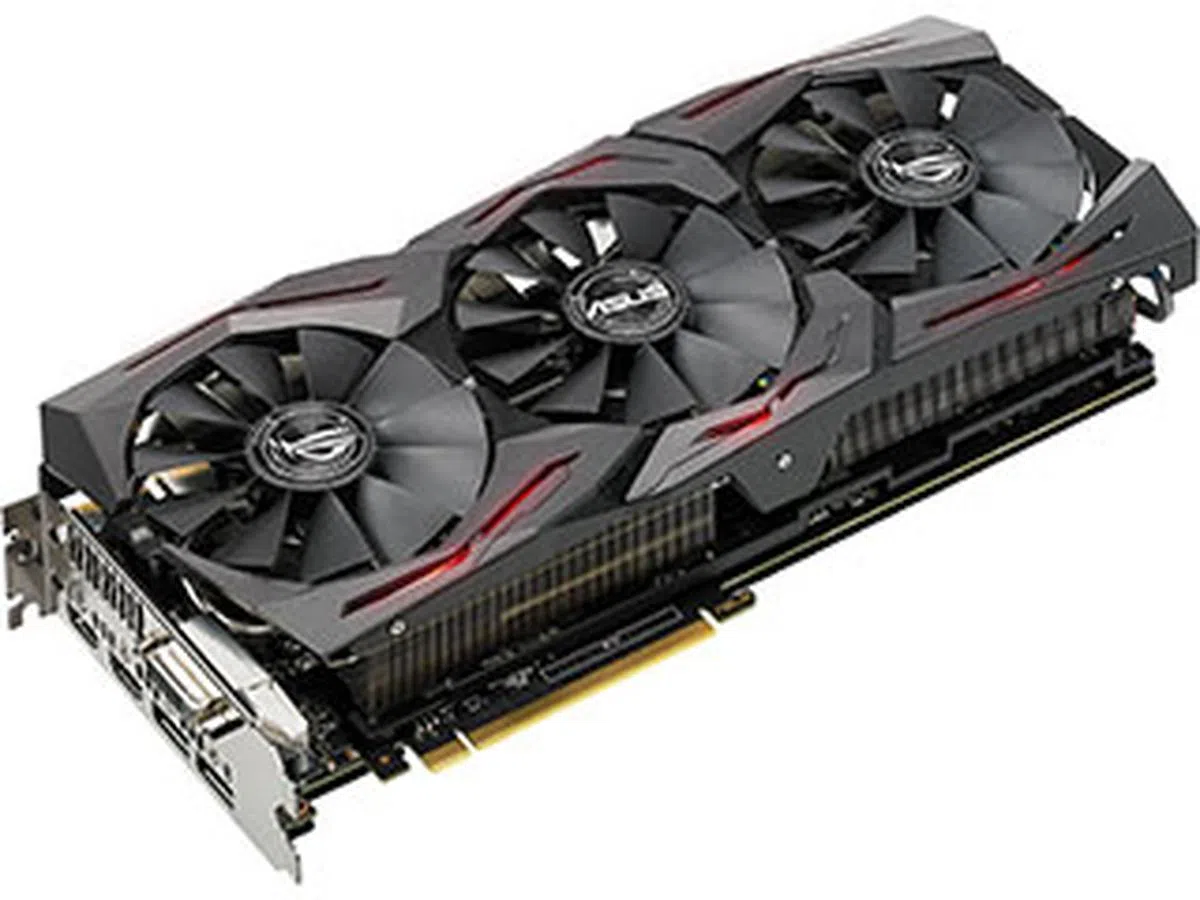 | |
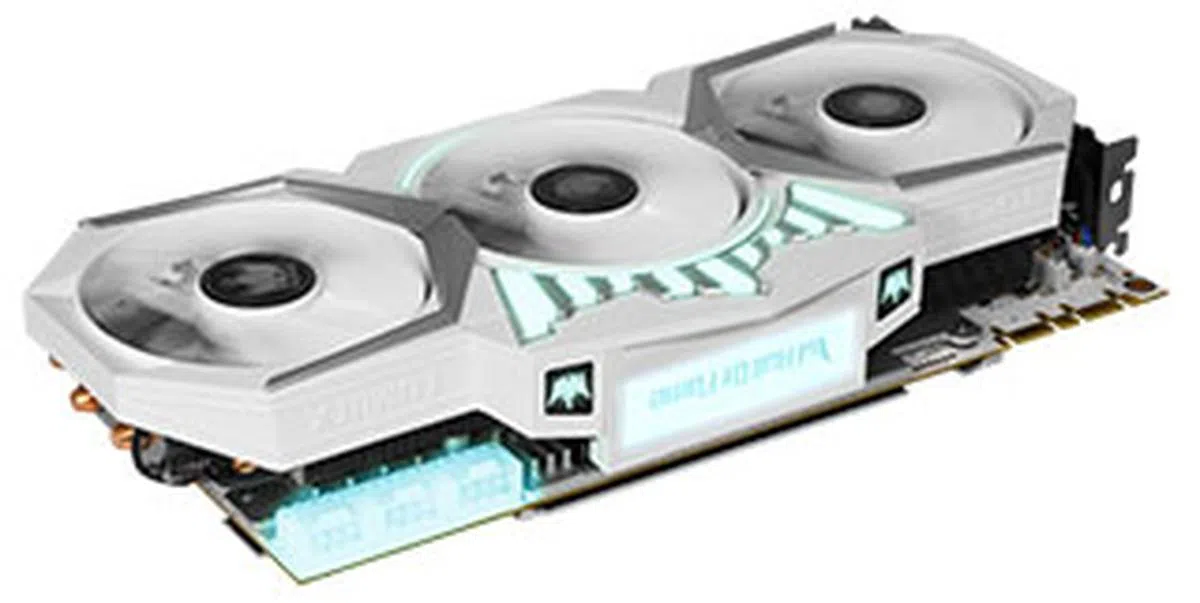 | |
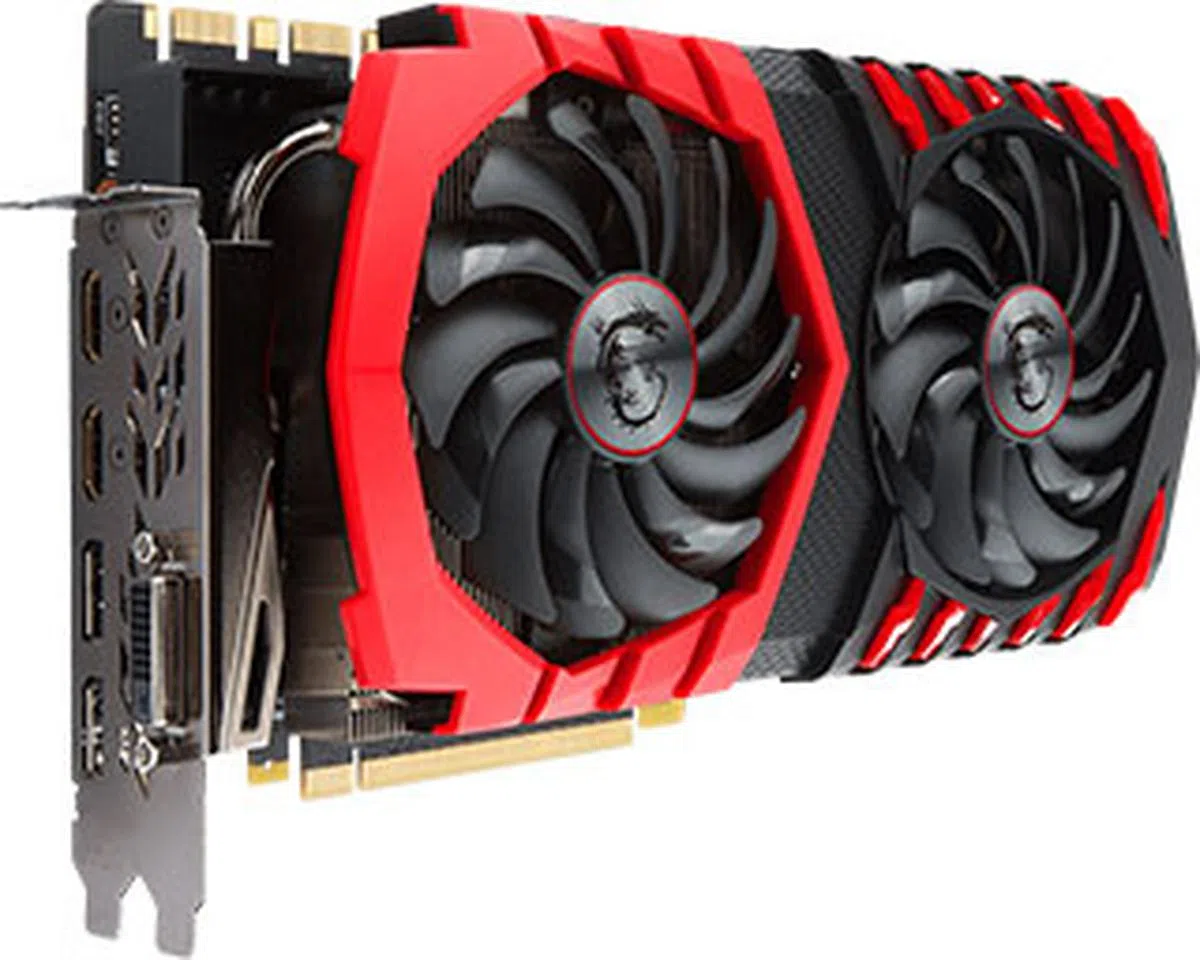 | |
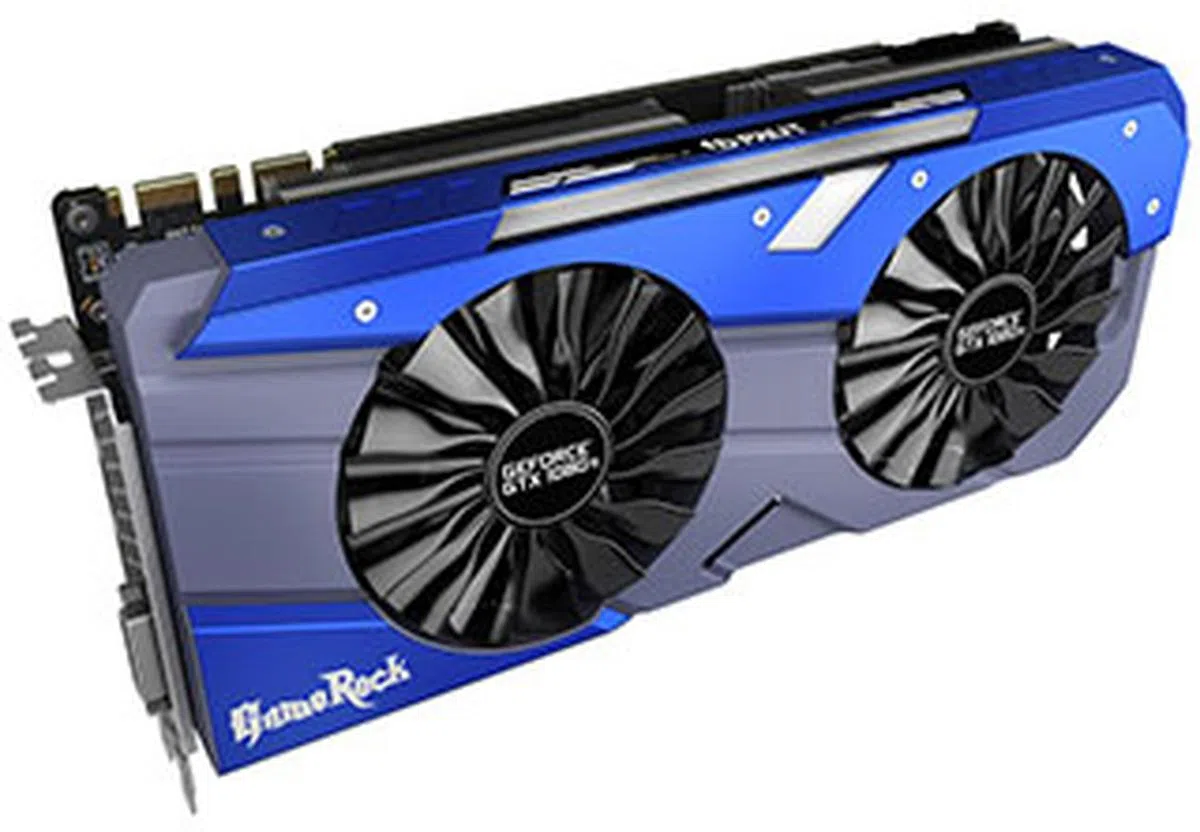 | |
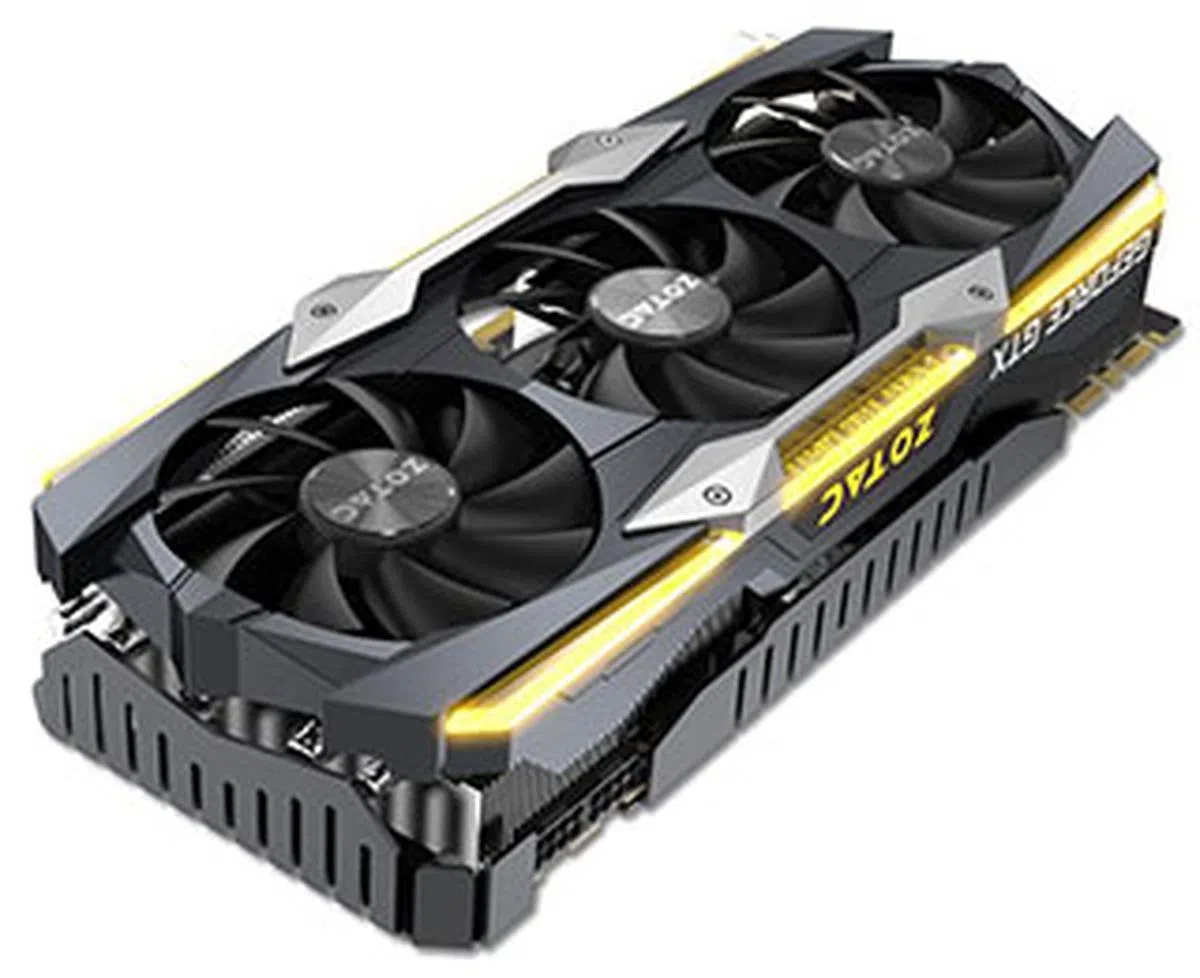 |
